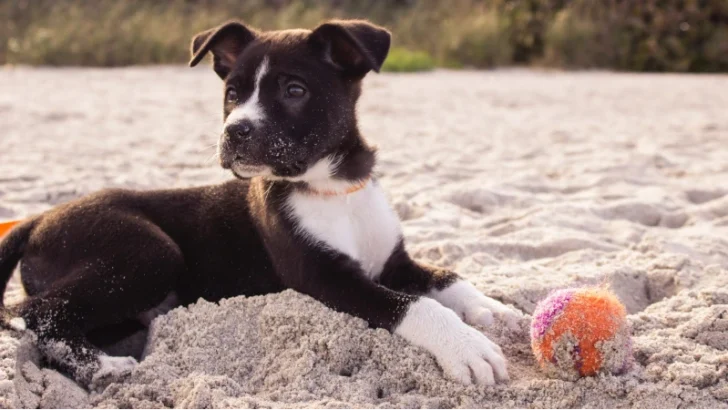Disclosure: This post may contain affiliate links, meaning we get a commission if you decide to make a purchase through our links, at no cost to you. Please read our disclosure for more info.
What is a martingale collar? Martingale dog collars have a design that does not have a standard clasp – fastex or buckle. They “act” in a different way: when the dog is walking calmly, the collar is at the base of the neck, widely and freely clasping it. But as soon as the dog begins to pull on the leash, the collar is pulled to its minimum achievable circumference and thus does not allow the dog to slip out of it while not strangling it. The reduction in the circumference of the collar occurs due to a small area in the structure. Let's call it a “sliding loop.” The sliding loop has a power reserve, which is limited up and down.
There are many ways to form a loop, but the essence is always the same: a sliding loop with specified maximum and minimum sizes. And don't let that word scare you. It doesn't sound like much, but it's a very user-friendly design. For dogs, it is convenient because it lies freely at the base of the neck, does not induce distress, does not press, and does not wipe the hair. For owners, it is convenient to put it on: before a walk, you need to set a yoke on the puppy. It makes life much more comfortable, particularly if you have several pets). Numerous dog landlords who have never used the martingale collar for dogs before, having tried once, become fans of this design forever.
They may or may not have girth adjustment. Elastic yokes are good for their versatility, but they always have an “excess length” of the collar and a pin needed to secure the adjustment. This segment gives both extra weight and double the thickness of the collar in this place. That's the price of versatility.
They will be lighter and more elegant, and this is the more noticeable, the more voluminous the fabric from which the ruff is sewn. But they will sit well and correctly only on a predetermined and precisely defined neck girth of ± 1 cm. This is more troublesome at the stage of selecting best dog collars. Such is the price of beauty.
The Pros
The pros of a martingale collar:
- In the normal position, when the leash sags, the collar lies freely. This avoids wool abrasion or skin irritation. This is mainly valid for canines with delicate skin or soft coats.
- It is a perfect option for canines with a narrow head that can be easily removed from a classic collar.
- They give more accurate control than classic chokes. Thus they are suggested by many cynologists for activity and walking.
- Reliably protect against the escape of aggressive, excitable, and shy dogs, which can break out very actively and unpredictably.
Safety Regulations
Like any other ammunition, the semi-choke collars must be reliable. Not simply the material of the collars for dogs but also its fittings must be of high quality and durable. The puppy cannot break the collar and go away. Therefore, it is most useful to prefer high-quality synthetic slings or durable custom leather dog collars. It is also essential to pay attention to accessories.
It should be designed for such a load and be created of high-quality metal. For example, stainless steel or brass. A stitched dog collar is stronger and will last longer than a riveted one. If it is leather, hand saddle stitching is preferable to machine stitching. It is much stronger and will not come apart, unlike a machine seam, even if it breaks somewhere.
However, it is essential to determine that a dog should always be supervised modeling a martingale collar. If he catches them while walking, she can seriously harm herself.
Collar Care
The rules are:
- Hand or machine wash at 30°C on a delicate or synthetic cycle.
- When washing in the machine, place the collar in a special mesh bag.
- Do not use fabric softener.
- Don't bleach.
- Do not dry clean.
- Drying only naturally, in a straightened state. Do not dry in dryers or near heaters.
- Don't iron.
- How to determine size?
- The choice of size is based on measuring the girth of the dog's neck just behind the ears.
Dimensions Rules
During the dimensions, the dog must either sit or stand (but not lie down).
The measuring tape should wrap tightly around the neck. If you do everything right, then during the measurement, the tape does not choke the dog, but it does not come off over the head either.
Important: do not add (and do not subtract) additional centimeters to the resulting figure. This figure is the future minimum girth of the collar, which will not allow the dog to slip out of it but will not choke it.

